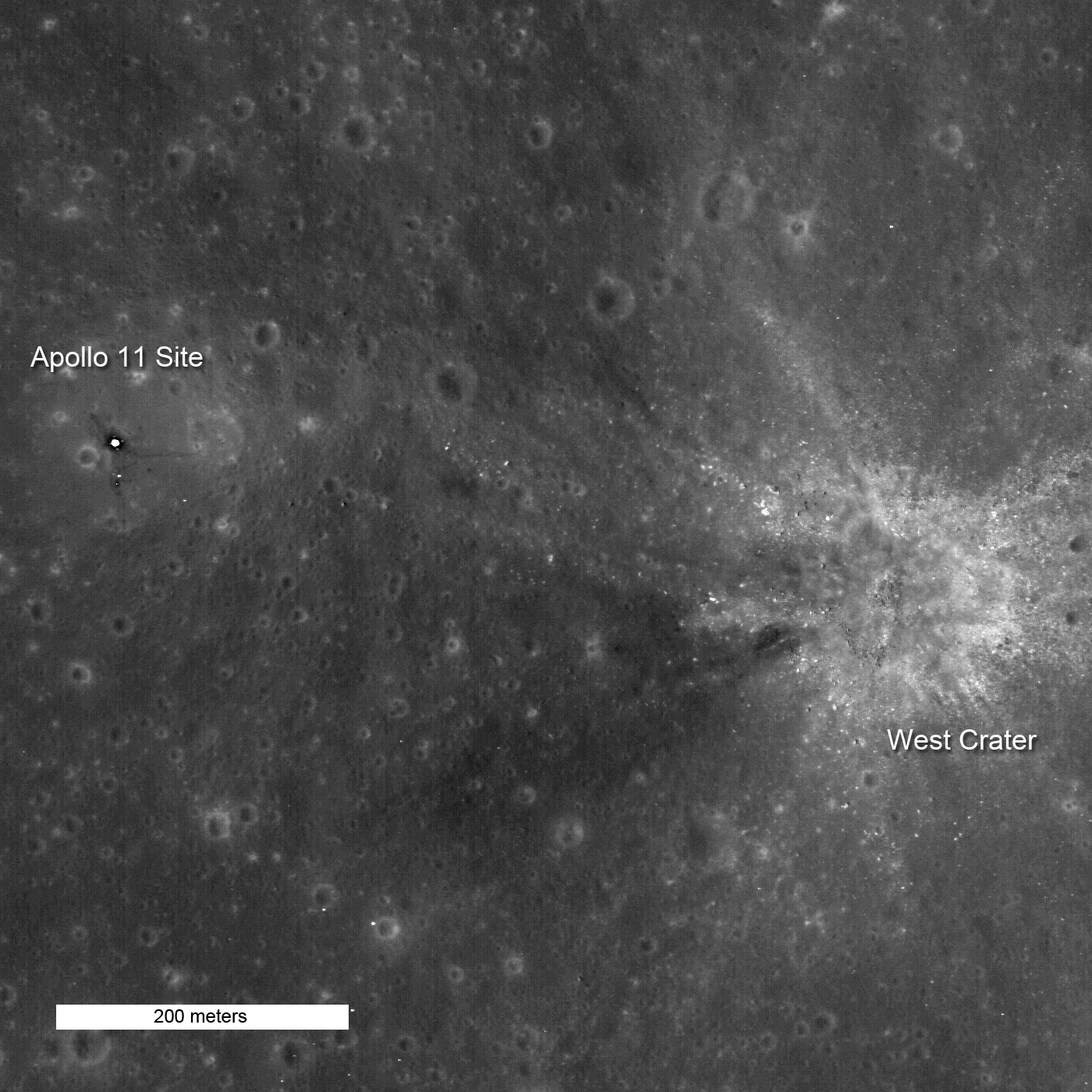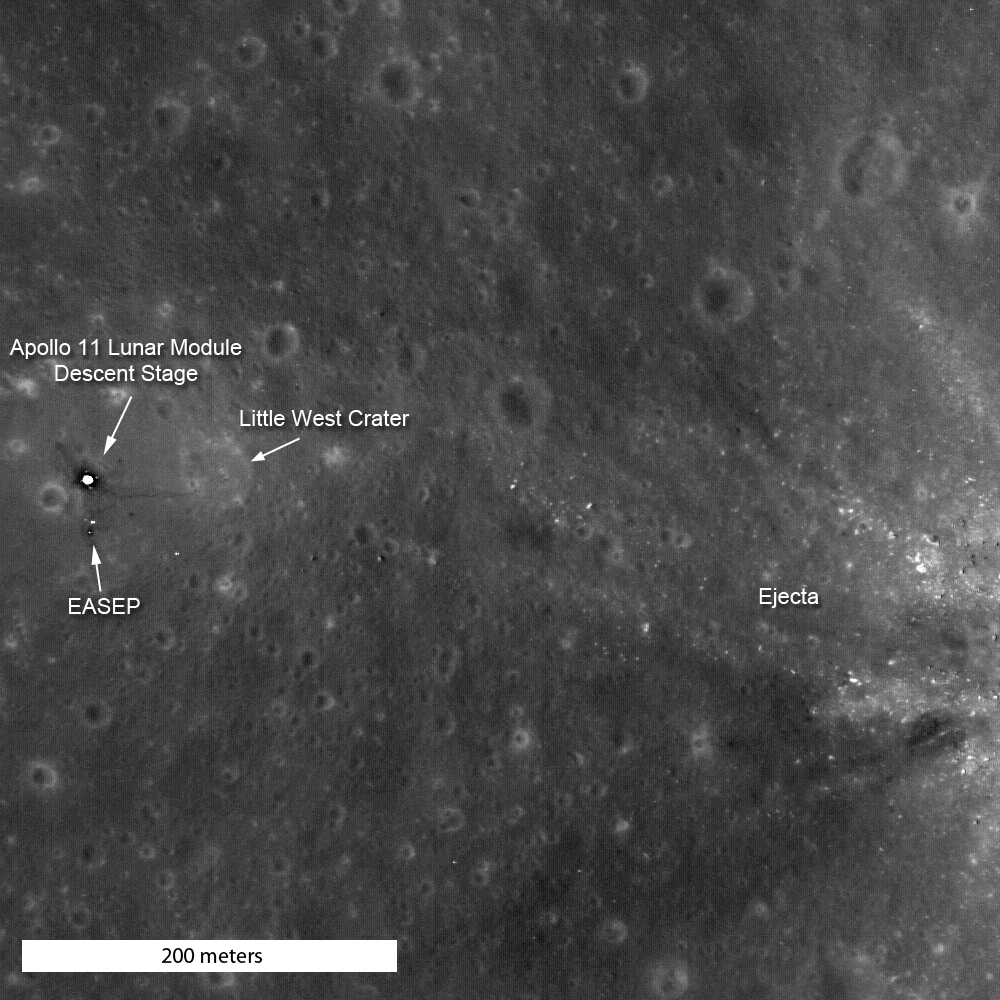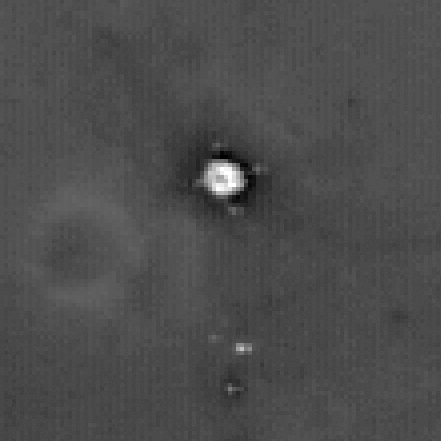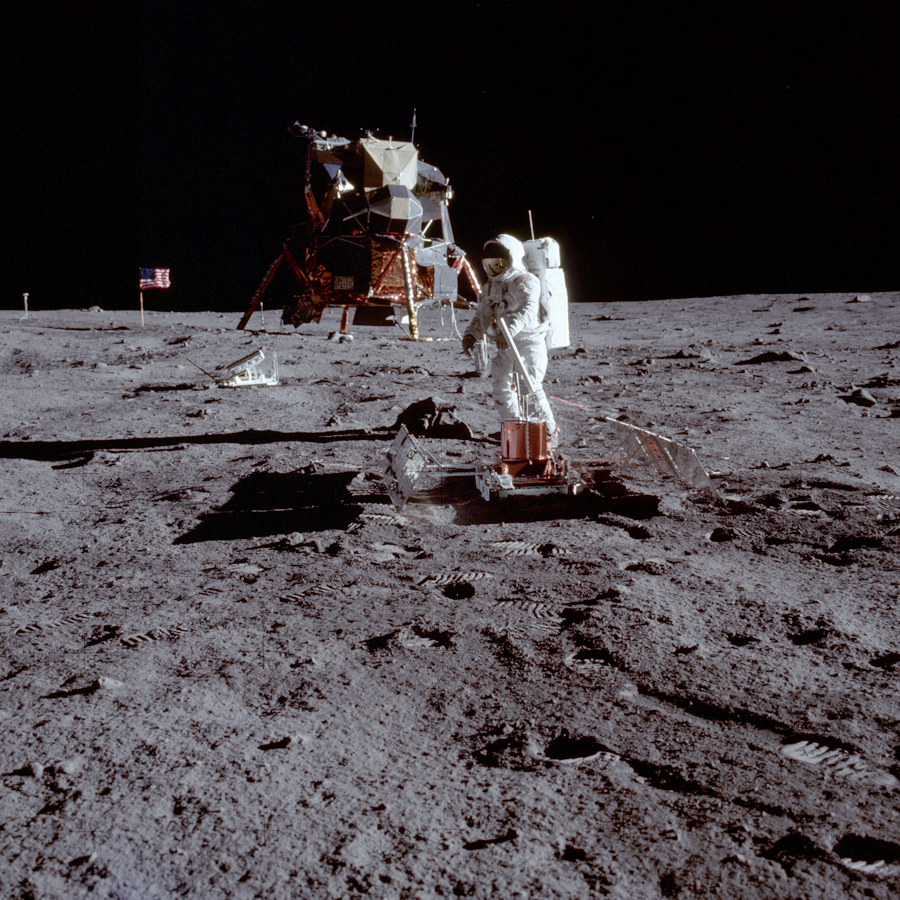
"Houston, Tranquility Base here. The Eagle has landed."
With those eight words, astronaut Neil Armstrong let the world know that Apollo 11 had landed safely on the Moon, beginning humankind's first exploration of another world. The landing certainly kept the mission operations crew in suspense as Armstrong maneuvered around the bouldery ejecta on the NE flank of West crater, finally settling down almost a kilometer to the west with only tens of seconds of fuel remaining.

The LROC team earlier released two pictures of the Apollo 11 landing site, each taken under different illumination angles and at lower resolution. This is LROC's first picture of Apollo 11 after LRO dropped into its 50 km mapping orbit. At this altitude, very small details of Tranquility Base can be discerned. The footpads of the LM are clearly discernible, components of the Early Apollo Science Experiments Package (EASEP) are easily seen, boulders from West crater lying on the surface to the east stand out, and the many small craters that cover the Moon are visible to the southeast. Material on the deck of the descent stage is highly reflective and is more than five times brighter than the mare, which is too much contrast to be captured in a normal stretch. As a result, the deck is saturated, giving it a washed-out appearance. Stretching the image to highlight details of the LM (below) washes out the details in the mare.
In the enlargement the Passive Seismic Experiment Package (PSEP) is seen (bottom). The dark halo surrounding the PSEP is a result of the repeated footsteps of the astronauts as they deployed the instrument and got it fine-tuned. Just north lies the Laser Ranging RetroReflector (LRRR), which is still in use today. The EASEP was a precursor to the more sophisticated Apollo Lunar Science Experiments Package (ALSEP) flown on the rest of the Moon landings.
Explore Tranquility Base and its surroundings for yourself in the full resolution image below!
Published by Mark Robinson on 9 November 2009

